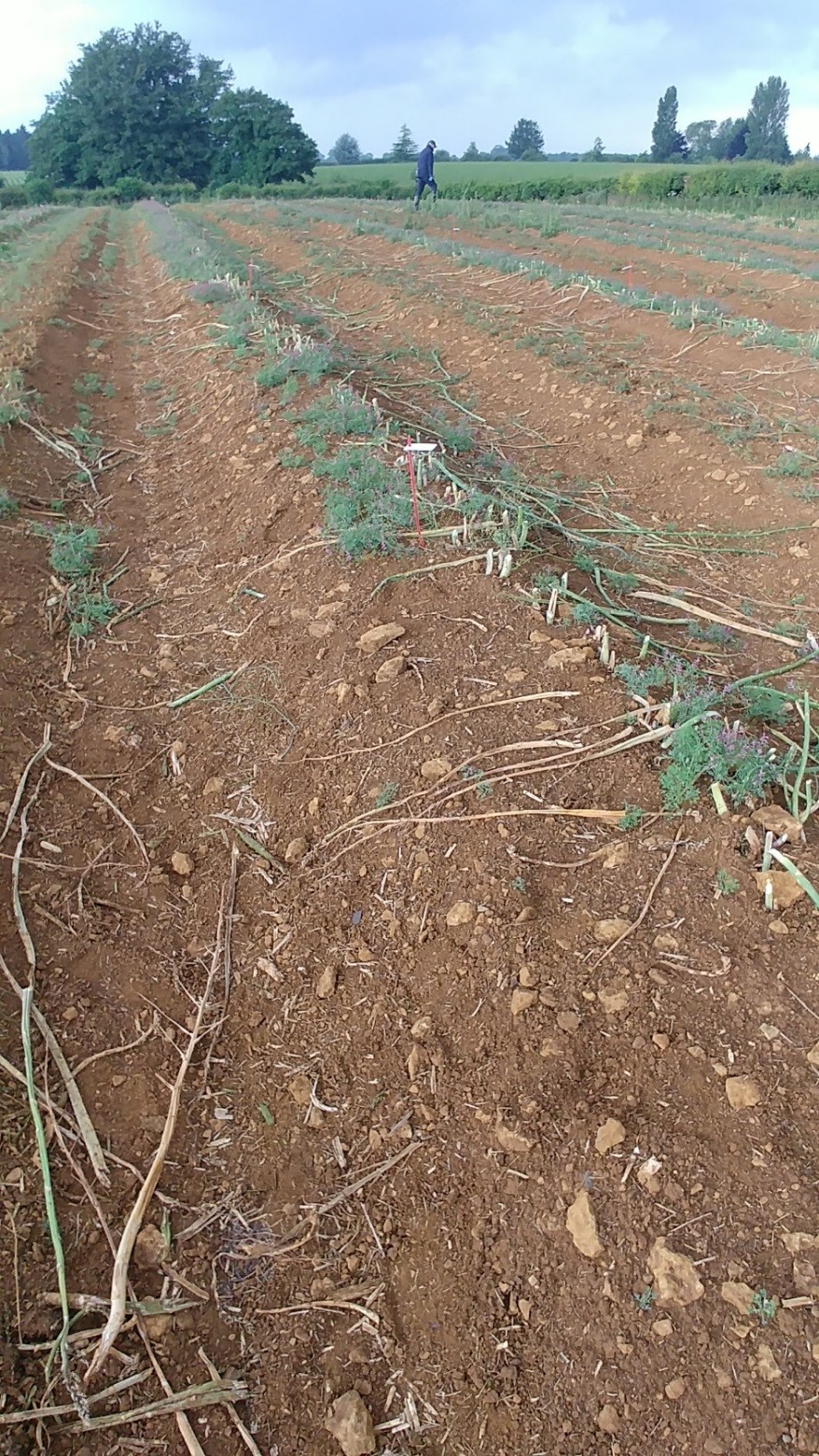Please click here to access the main AHDB website and other sectors.
Weeding out asparagus herbicide treatments
Monday, 17 May 2021
Our asparagus herbicide trials have identified several promising products that will improve control options for growers. But dry weather in the pre-harvest trial may have resulted in greater crop safety than you would achieve in wetter conditions, explains Angela Huckle.
To help fill the current gaps in weed control options for asparagus crops, we have carried out three herbicide screenings over a two-year period as part of SCEPTREplus.
In 2019 we ran post-harvest and inter-row trials, with the pre-harvest screening taking place the following year on a different crop.
Post-harvest results
The weed spectrum at the site was mainly sowthistle, with some groundsel present. Due to commercial sensitivities, some of the products tested remain coded.
AHDB 9974 showed good levels of crop safety, and the manufacturers are pursuing authorisation for post-harvest use. Emerger and two other coded products also looked useful.
One of the best-performing treatments for inter-row was Sencorex 0.25 L/ha + Buctril 0.5 L/ha. One product, AHDB 9976 would bring suppression of field bindweed and another product, AHDB 9840 looked useful but we need to reassess crop safety.
A potato desiccant also gave good efficacy but scorched plants at the rate we used. A lower rate may be safer but would need to be tested.
Pre-harvest results
Twelve herbicide treatments were applied on 1 April 2020, and the spears emerged a week later. Throughout the trial period and at application, the soil conditions were very dry, which hindered the efficacy of some residual products that require moisture for increased control.
However, the recently authorised product Artist (flufenacet + metribuzin) performed well in the trial. It gave a mean reduction of 70% in the levels of fumitory, which was the predominant weed at the site. This is likely due to the contact activity of metribuzin, as all treatments that included metribuzin performed well.
No concerning crop effects were seen in the trial from any of the treatments. However, we applied treatments at double-rate in the 5th replicate, and the only effect seen from a tank mix of Callisto 1.5 L/ha + Gamit 0.3 L/ha + Shotput 1.5 L/ha was a slightly kinky appearance to the emerged spears. This persisted for a month.
At these higher rates, we would normally expect to see a greater effect on the crop. With the dry weather, it was likely a ‘safer’ year for crop effects. It would be advantageous to see the promising products under wetter conditions, so caution should be exercised regarding the crop safety results.
AHDB 9898 and AHDB 9952 resulted in a 30% reduction in the level of fumitory and may also be useful additions to the current armoury. AHDB 9898 would be useful for control of black nightshade.
The EAMU for Artist (1340/20) permits use for one application in established crops at 2.0 L/ha either between February and April or post-final harvest between May and November and could therefore be used either before or after harvest. Artist was applied at 2.5 L/ha at a pre-harvest timing in the trial.
The trials were held at Wykham Park Farm, with kind permission from John Colegrave.

Artist has been used on the plot in the foreground, with AHDB 9952 beyond the red marker. There is a clear difference in weed control compared to the plot beyond.
More information about the herbicide trials and read the full reports


